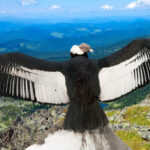In William Golding’s chilling novel, Lord of the Flies, a group of British schoolboys stranded on a deserted island descends into savagery, haunted by the imagined presence of a terrifying creature they call “the beast.” But what exactly is this beast? Is it a tangible monster lurking in the shadows, or does it represent something far more profound and disturbing about human nature itself? Understanding the beast is crucial to grasping the core themes of Golding’s masterpiece and its enduring relevance.
Initially, the boys, influenced by Piggy’s rational fears of the unknown and fueled by the younger boys’ nightmares, conceive of the beast as a physical entity. Rumors and anxieties quickly morph into vivid descriptions of a snake-like “beastie” or a monstrous creature from the sea. This fear of a tangible beast is palpable, especially among the “littluns,” and it significantly shapes the early dynamics of the island society. The boys organize hunts and build fires, ostensibly to protect themselves from this external threat, highlighting their primal instinct to confront danger in a physical, understandable form.
However, the true nature of the beast begins to unravel through Simon, the most insightful and spiritual boy in the group. In a pivotal moment of clarity, Simon has an encounter with the severed pig’s head on a stick – “the Lord of the Flies” itself – and realizes the horrifying truth. The beast is not an external monster to be hunted and killed. Instead, as Simon profoundly understands, “maybe it’s only us.” This realization is not just a moment of individual understanding but a central turning point in the novel’s exploration of human nature.
The beast, therefore, is not a creature from the jungle but a manifestation of the boys’ own inherent savagery and primal instincts. It symbolizes the darkness that resides within each of them, the capacity for violence, cruelty, and irrationality that emerges when the constraints of civilization are removed. As the boys descend further into chaos, the beast evolves from a fear of an external monster to a terrifying embodiment of their internal degeneration. The more they succumb to their base desires and tribal impulses, the more powerful and real the beast becomes in their collective psyche.
Jack Merridew, the charismatic and power-hungry choirboy, masterfully exploits the fear of the beast to consolidate his leadership and control over the group. He transforms the hunt for the beast into a ritualistic activity, offering sacrifices to appease it and diverting the boys’ anxieties into violent hunts and tribal dances. By positioning himself as the protector against the beast, Jack gains unwavering loyalty and fuels the boys’ descent into savagery. The beast, in this context, becomes a tool for manipulation, allowing Jack to maintain power through fear and superstition rather than through reason and cooperation, which Ralph initially championed.
In stark contrast, Piggy represents rationality, intellect, and the remnants of civilization. He dismisses the idea of a physical beast, urging the boys to rely on logic and reason. However, Piggy’s rational approach is ultimately ineffective against the rising tide of fear and savagery embodied by the beast. His inability to grasp the emotional and primal power of the beast, and his reliance on intellect alone, makes him increasingly vulnerable in the face of the boys’ escalating descent into barbarism.
Ralph, initially embodying order and civilization, grapples with the concept of the beast throughout the novel. He attempts to maintain structure, rules, and the hope of rescue, but he is constantly challenged by the seductive allure of savagery and the pervasive fear of the beast. Ralph’s internal struggle reflects the broader conflict between civilization and primal instincts. He witnesses the beast’s terrifying influence firsthand as the boys become increasingly violent and irrational, eventually understanding the tragic reality that the true beast resides within them all.
In conclusion, the beast in Lord of the Flies is not a literal monster but a potent symbol of humanity’s inherent capacity for savagery and evil. It represents the primal instincts that lie beneath the surface of civilization, waiting to emerge when societal structures crumble. Golding masterfully uses the beast to explore profound themes of human nature, the fragility of civilization, and the terrifying consequences of unchecked fear and primal desires. The true horror of Lord of the Flies lies not in a creature lurking in the jungle, but in the chilling realization that the beast is, and always has been, within us.
